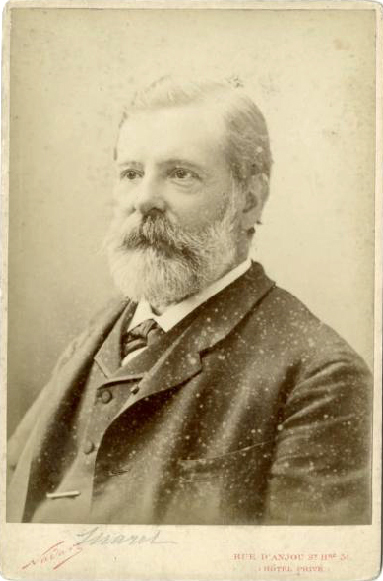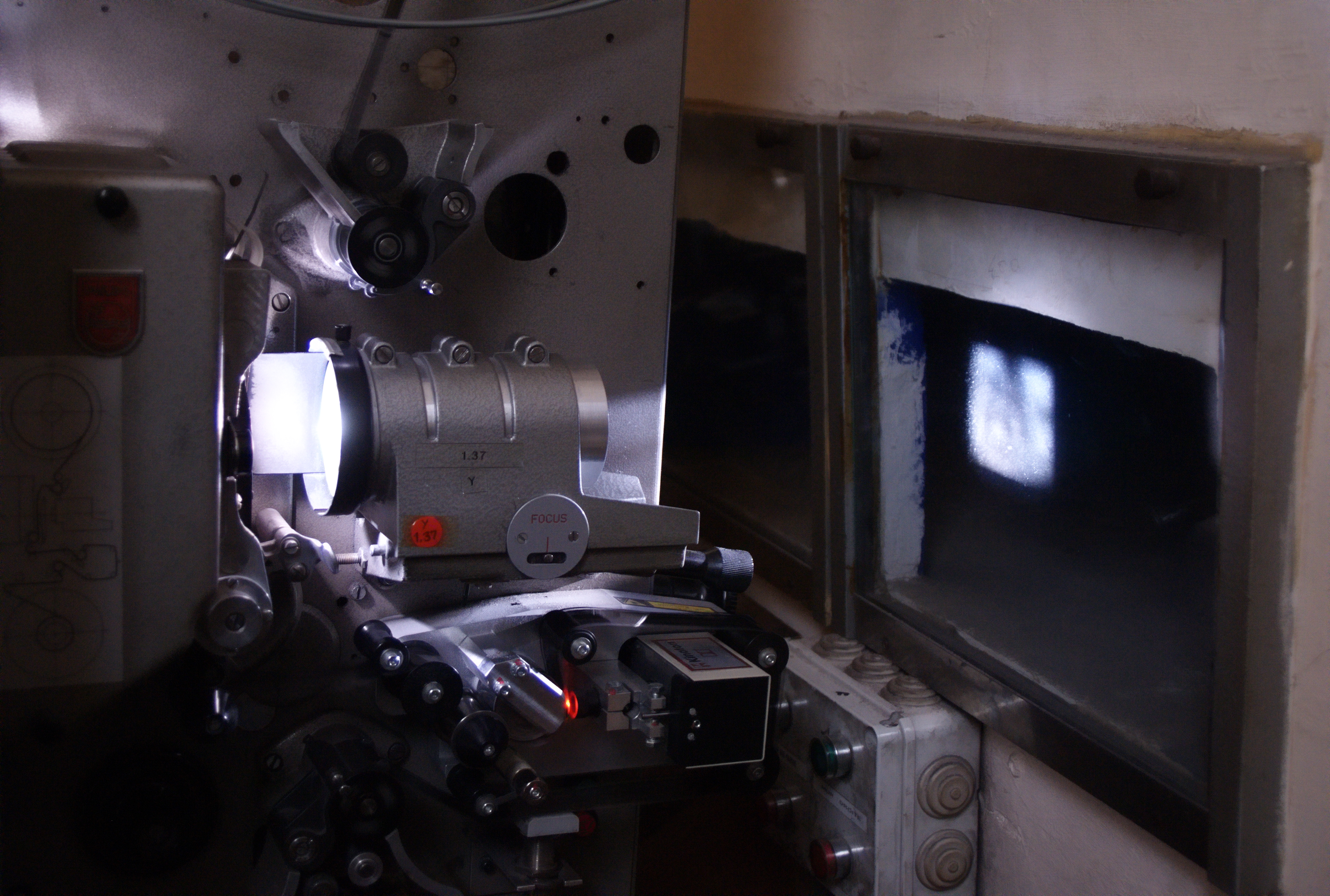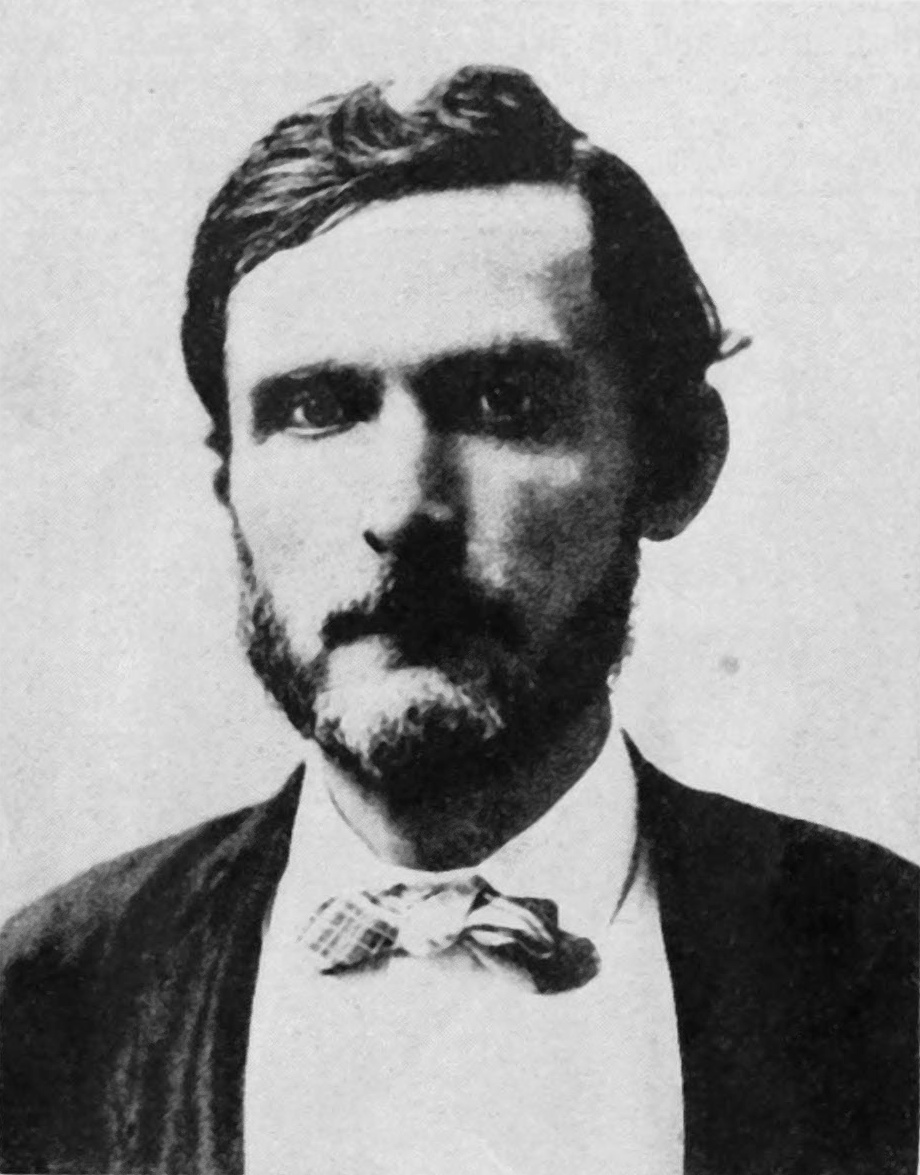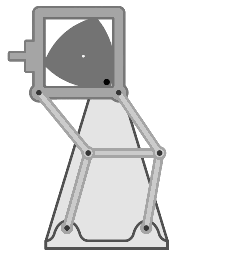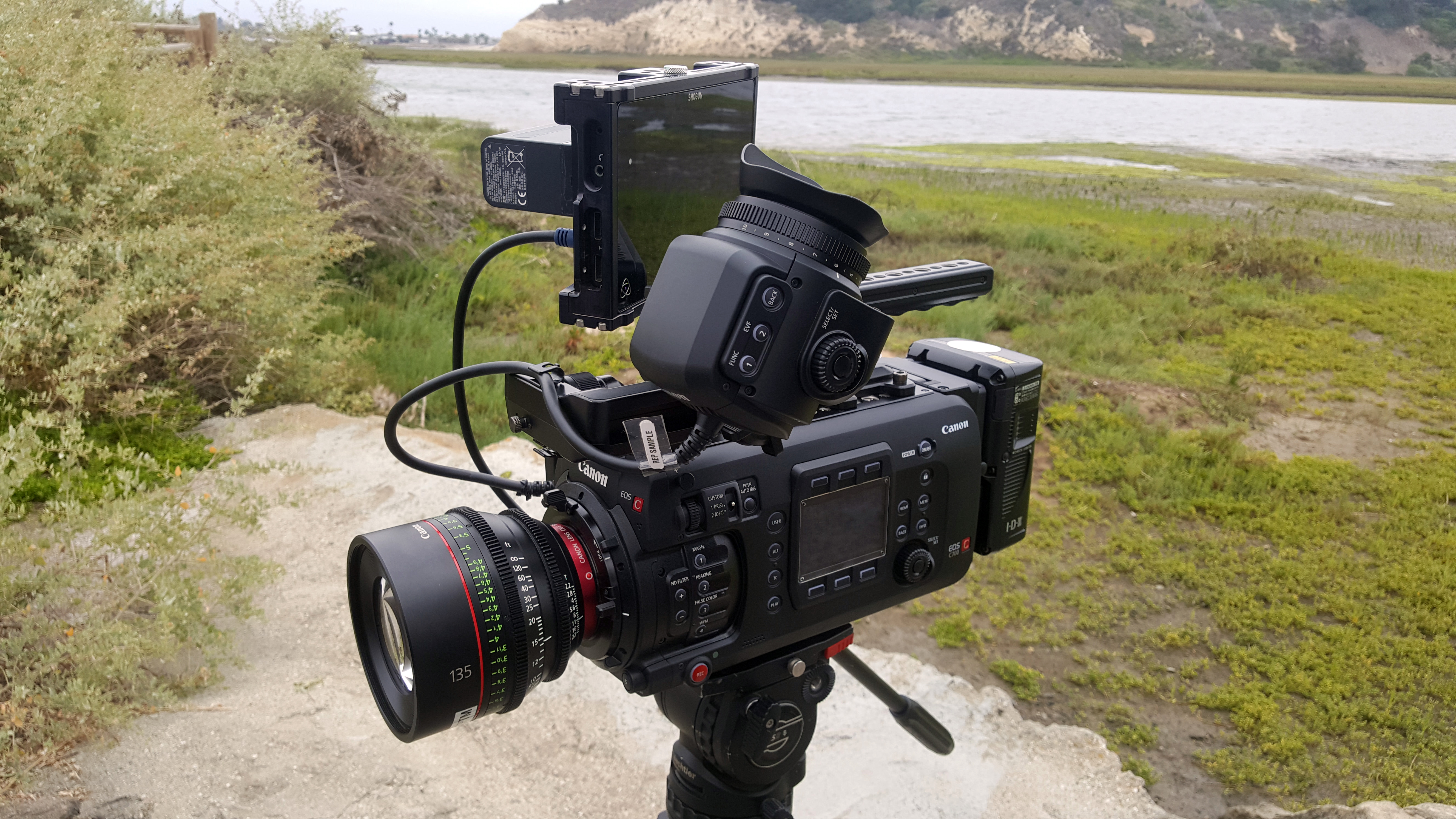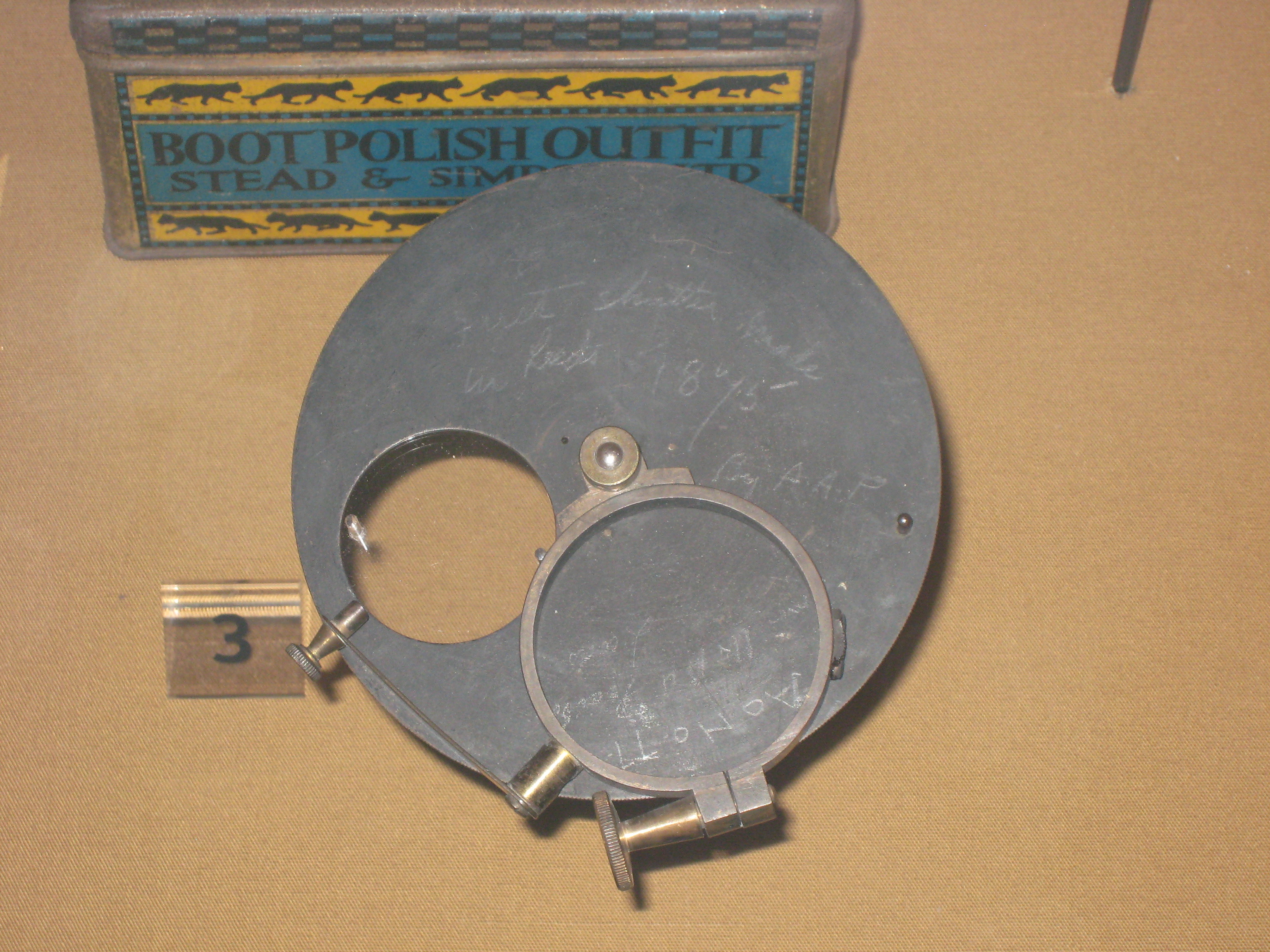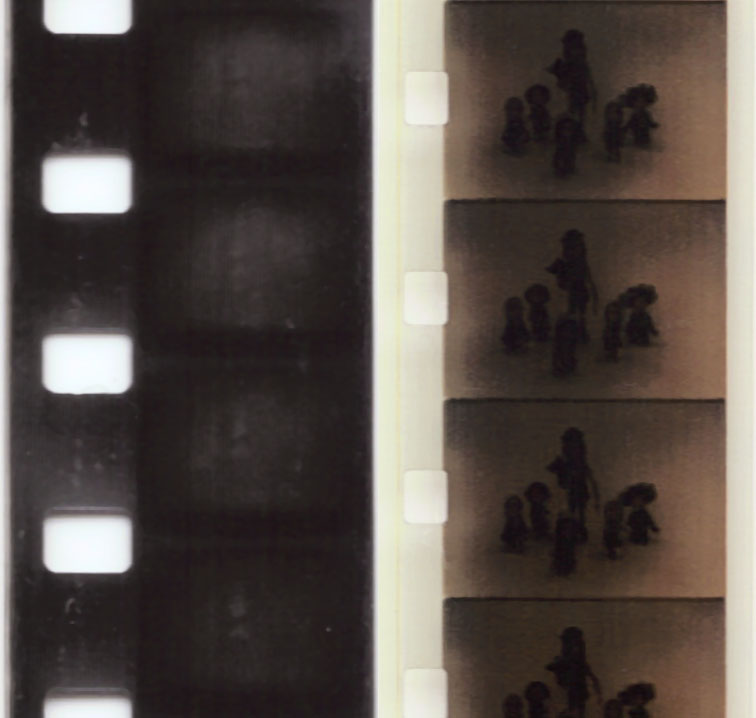|
W.K. Dickson
William Kennedy Laurie Dickson (3 August 1860 – 28 September 1935) was a British inventor who devised an early motion picture camera under the employment of Thomas Edison. Early life William Kennedy Dickson was born on 3 August 1860 in Le Minihic-sur-Rance, Brittany, France. His mother was Elizabeth Kennedy-Laurie (1823?–1879) who may have been born in Virginia. His father was James Waite Dickson, a Scottish artist, astronomer and linguist. James Dickson claimed direct lineage from the painter William Hogarth, and from Judge John Waite, the man who sentenced King Charles I to death. Inventor and film innovator At age 19 in 1879, William Dickson wrote a letter to American inventor and entrepreneur Thomas Edison seeking employment. He was turned down. That same year Dickson, his mother, and two sisters moved from Britain to Virginia. In 1883 he was finally hired to work at Edison's laboratory in Menlo Park, New Jersey. In 1888, Edison conceived of a device that w ... [...More Info...] [...Related Items...] OR: [Wikipedia] [Google] [Baidu] |
Dickson Greeting
''Dickson Greeting'' is an 1891 American short silent film. Directed, produced by, and starring motion-picture pioneer William K. L. Dickson, it displays a 3-second clip of him passing a hat in front of himself, and reaching for it with his other hand. It was filmed on May 20, 1891 in the Photographic Building at Edison's Black Maria studio, West Orange, New Jersey, in collaboration with Thomas Edison using his kinetograph The Kinetoscope is an early motion picture exhibition device, designed for films to be viewed by one person at a time through a peephole viewer window. The Kinetoscope was not a movie projector, but it introduced the basic approach that would .... The film was played for viewers at the National Federation of Women's Clubs, one of the first public presentations of a motion picture. References External links ''Dickson Greeting'', Library of Congress* * 1891 films 1890s American films American black-and-white films American silent short films ... [...More Info...] [...Related Items...] OR: [Wikipedia] [Google] [Baidu] |
Étienne-Jules Marey
Étienne-Jules Marey (; 5 March 1830, Beaune, Côte-d'Or – 15 May 1904, Paris) was a French scientist, physiologist and chronophotographer. His work was significant in the development of cardiology, physical instrumentation, aviation, cinematography and the science of laboratory photography. He is widely considered to be a pioneer of photography and an influential pioneer of the history of cinema. He was also a pioneer in establishing a variety of graphical techniques for the display and interpretation of quantitative data from physiological measurement. Biography Marey started by studying blood circulation in the human body. Then he shifted to analyzing heart beats, respiration, muscles (myography), and movement of the body. To aid his studies he developed many instruments for precise measurements. For example, in 1859, in collaboration with the physiologist Auguste Chauveau and the watch manufacturer Breguet, he developed a wearable '' Sphygmograph'' to measure the ... [...More Info...] [...Related Items...] OR: [Wikipedia] [Google] [Baidu] |
Eugene Lauste
Eugène Augustin Lauste (17 January 1857 in Montmartre, France – 27 June 1935 in Montclair, New Jersey) was a French inventor instrumental in the technological development of the history of cinema. By age 23 he held 53 French patents. He emigrated to the United States in 1886 where he worked as an assistant to French-born William Kennedy Laurie Dickson at the Edison Laboratories. Lauste contributed to the development of the leading predecessor to the motion picture projector, the Kinetoscope, an invention for which Edison would claim credit. Lauste left Edison in 1892. Lauste also worked on an idea for a combustible gasoline engine; he did develop a working model in the 1890s but gave up when told that such a noisy device would never be widely used. He then worked with Major Woodville Latham, for whom he engineered the Eidoloscope and assisted with the design of the Latham loop. (Later, Dickson would credit Lauste with the loop's invention.) The Eidoloscope was demonstrated ... [...More Info...] [...Related Items...] OR: [Wikipedia] [Google] [Baidu] |
Movie Projector
A movie projector is an opto- mechanical device for displaying motion picture film by projecting it onto a screen. Most of the optical and mechanical elements, except for the illumination and sound devices, are present in movie cameras. Modern movie projectors are specially built video projectors. (see also digital cinema) Many projectors are specific to a particular film gauge and not all movie projectors are film projectors since the use of film is required. Predecessors The main precursor to the movie projector was the magic lantern. In its most common setup it had a concave mirror behind a light source to help direct as much light as possible through a painted glass picture slide and a lens, out of the lantern onto a screen. Simple mechanics to have the painted images moving were probably implemented since Christiaan Huygens introduced the apparatus around 1659. Initially candles and oil lamps were used, but other light sources, such as the argand lamp and limelig ... [...More Info...] [...Related Items...] OR: [Wikipedia] [Google] [Baidu] |
Woodville Latham
Major Woodville Latham (1837–1911) was an ordnance officer of the Confederacy during the American Civil War and professor of chemistry at West Virginia University. He was significant in the development of early film technology. Woodville Latham was the father of Grey Latham and Otway Latham, owners of a kinetoscope parlor in New York City. In December 1894 Latham and his two sons formed the Lambda Company at 35 Frankfort Street, employing Eugène Lauste, a former Thomas Edison employee, as well as motion picture pioneer William Kennedy Dickson. Dickson would not leave Edison's employ until April 1895 and initially lent his expertise to the Lathams in secret. The Eidoloscope was demonstrated for members of the press on April 21, 1895, and opened to the paying public on May 20, in a lower Broadway store with films of the Griffo-Barnett prize boxing fight, taken from Madison Square Garden's roof on May 4. In 1898 the Lathams abandoned motion pictures and soon lost their patents ... [...More Info...] [...Related Items...] OR: [Wikipedia] [Google] [Baidu] |
Cinematography
Cinematography (from ancient Greek κίνημα, ''kìnema'' "movement" and γράφειν, ''gràphein'' "to write") is the art of Film, motion picture (and more recently, electronic video camera) photography. Cinematographers use a lens (optics), lens to focus reflected light from objects into a real image that is transferred to some image sensor or film, light-sensitive material inside a movie camera. These Exposure (photography), exposures are created sequentially and preserved for later processing and viewing as a motion picture. Capturing images with an electronic image sensor produces an Charge-coupled device, electrical charge for each pixel in the image, which is Video processing, electronically processed and stored in a video file for subsequent processing or display. Images captured with photographic emulsion result in a series of invisible latent images on the film stock, which are chemically "Photographic developer, developed" into a Positive (photography), visibl ... [...More Info...] [...Related Items...] OR: [Wikipedia] [Google] [Baidu] |
Escapement
An escapement is a mechanical linkage in mechanical watches and clocks that gives impulses to the timekeeping element and periodically releases the gear train to move forward, advancing the clock's hands. The impulse action transfers energy to the clock's timekeeping element (usually a pendulum or balance wheel) to replace the energy lost to friction during its cycle and keep the timekeeper oscillating. The escapement is driven by force from a coiled spring (device), spring or a suspended weight, transmitted through the timepiece's gear train. Each swing of the pendulum or balance wheel releases a tooth of the escapement's ''escape wheel'', allowing the clock's gear train to advance or "escape" by a fixed amount. This regular periodic advancement moves the clock's hands forward at a steady rate. At the same time, the tooth gives the timekeeping element a push, before another tooth catches on the escapement's pallet, returning the escapement to its "locked" state. The sudden st ... [...More Info...] [...Related Items...] OR: [Wikipedia] [Google] [Baidu] |
Intermittent Movement
{{short description, Device by which motion picture film is advanced An intermittent mechanism or intermittent movement is a device or movement which regularly advances an object, web, or plastic film and then holds it in place. This process is commonly used in industry and manufacturing. This motion is critical to the use of film in a movie camera or movie projector. This is in contrast to a continuous mechanism, whereby the film is constantly in motion and the image is held steady by optical or electronic methods. The reason the intermittent mechanism "works" for the viewer is because of a phenomenon called persistence of vision. History Intermittent mechanisms were first used in sewing machines, in order for the fabric to be fed through correctly - ensuring it is stationary as each stitch is made, while moving the required distance between stitches. Methods used The intermittent mechanism must be employed in concert with a rotating shutter which blocks light transm ... [...More Info...] [...Related Items...] OR: [Wikipedia] [Google] [Baidu] |
Movie Camera
A movie camera (also known as a film camera and cine-camera) is a type of photographic camera that rapidly takes a sequence of photographs, either on an image sensor or onto film stock, in order to produce a moving image to project onto a movie screen. In contrast to the still camera, which captures a single image at a time, by way of an intermittent mechanism, the movie camera takes a series of images; each image is a ''frame'' of film. The strips of frames are projected through a movie projector at a specific frame rate (number of frames per second) to show a moving picture. When projected at a given frame rate, the persistence of vision allows the eyes and brain of the viewer to merge the separate frames into a continuous moving picture. History An interesting forerunner to the movie camera was the machine invented by Francis Ronalds at the Kew Observatory in 1845. A photosensitive surface was drawn slowly past the aperture diaphragm of the camera by a clockwork mechanism to ... [...More Info...] [...Related Items...] OR: [Wikipedia] [Google] [Baidu] |
Kinetograph
The Kinetoscope is an early motion picture exhibition device, designed for films to be viewed by one person at a time through a peephole viewer window. The Kinetoscope was not a movie projector, but it introduced the basic approach that would become the standard for all cinematic projection before the advent of video: it created the illusion of movement by conveying a strip of perforated film bearing sequential images over a light source with a high-speed shutter. First described in conceptual terms by U.S. inventor Thomas Edison in 1888, it was largely developed by his employee William Kennedy Laurie Dickson between 1889 and 1892. Dickson and his team at the Edison lab in New Jersey also devised the Kinetograph, an innovative motion picture camera with rapid intermittent, or stop-and-go, film movement, to photograph movies for in-house experiments and, eventually, commercial Kinetoscope presentations. A Kinetoscope prototype was first semipublicly demonstrated to members of ... [...More Info...] [...Related Items...] OR: [Wikipedia] [Google] [Baidu] |
Shutter (photography)
In photography, a shutter is a device that allows light to pass for a determined period, exposing photographic film or a photosensitive digital sensor to light in order to capture a permanent image of a scene. A shutter can also be used to allow pulses of light to pass outwards, as seen in a movie projector or a signal lamp. A shutter of variable speed is used to control exposure time of the film. The shutter is constructed so that it automatically closes after a certain required time interval. The speed of the shutter is controlled by a ring outside the camera, on which various timings are marked. Camera shutter Camera shutters can be fitted in several positions: * Leaf shutters are usually fitted within a lens assembly (''central shutter''), or more rarely immediately behind (''behind-the-lens shutter'') or, even more rarely, in front of a lens, and shut off the beam of light where it is narrow. * Focal-plane shutters are mounted near the focal plane and move to uncover th ... [...More Info...] [...Related Items...] OR: [Wikipedia] [Google] [Baidu] |
Film Perforations
Film perforations, also known as perfs and sprocket holes, are the holes placed in the film stock during manufacturing and used for transporting (by sprockets and claws) and steadying (by pin registration) the film. Films may have different types of perforations depending on film gauge, film format, and intended usage. Perforations are also used as a standard measuring reference within certain camera systems to refer to the size of the frame. Some formats are referred to in terms of the ratio "perforations per frame/gauge size" to provide an easy way of denoting size. For instance, 35mm Academy is also known as 4 perf-35mm; VistaVision is 8 perf-35mm; the long-time standard Todd-AO 70 mm film is 5 perf-70mm; and IMAX is 15 perf-70mm. This description does not indicate whether the film transport is horizontal or vertical, but uncertainty is precluded because there are currently no horizontal systems using the same number of perforations on the same gauge as a vertical on ... [...More Info...] [...Related Items...] OR: [Wikipedia] [Google] [Baidu] |
